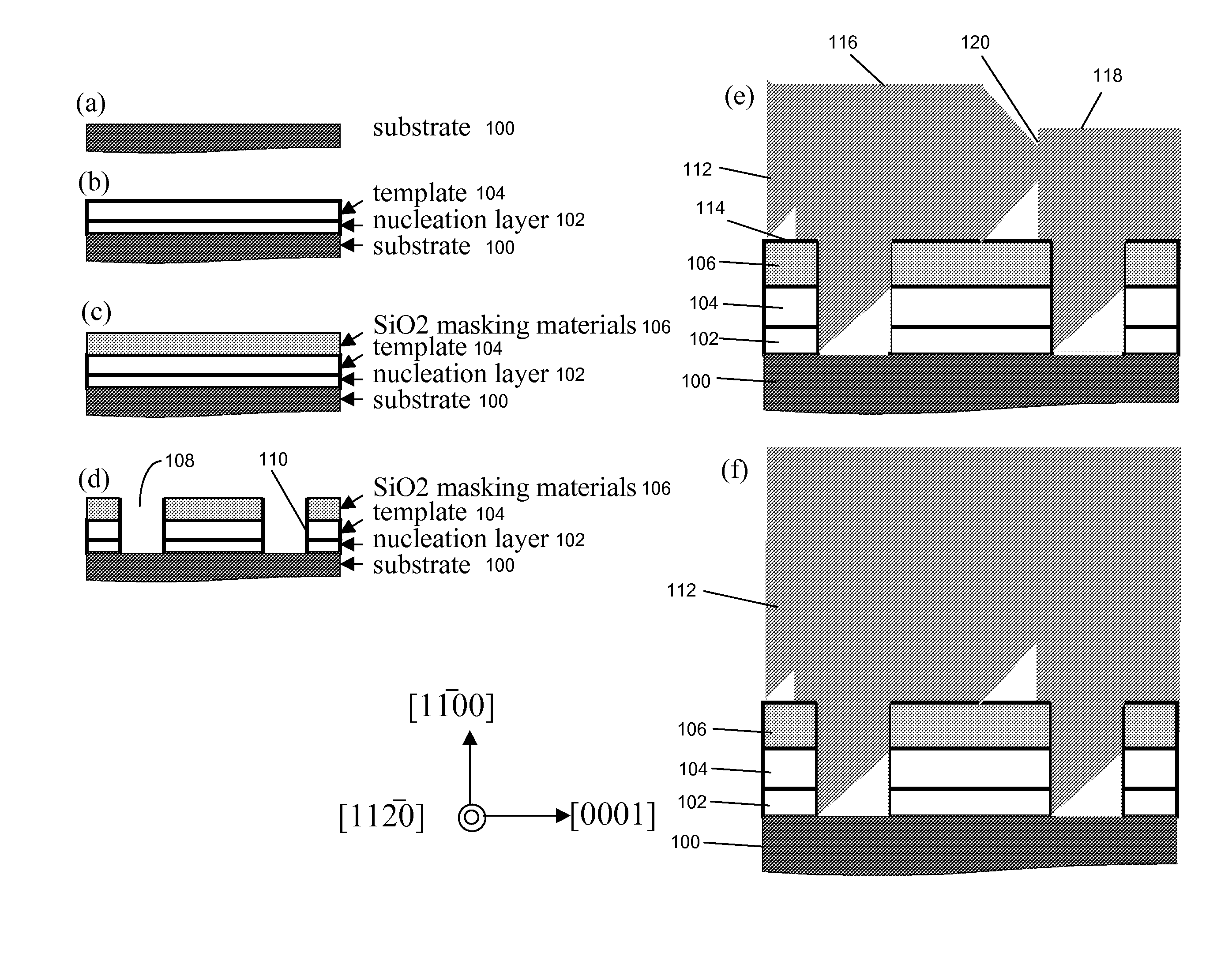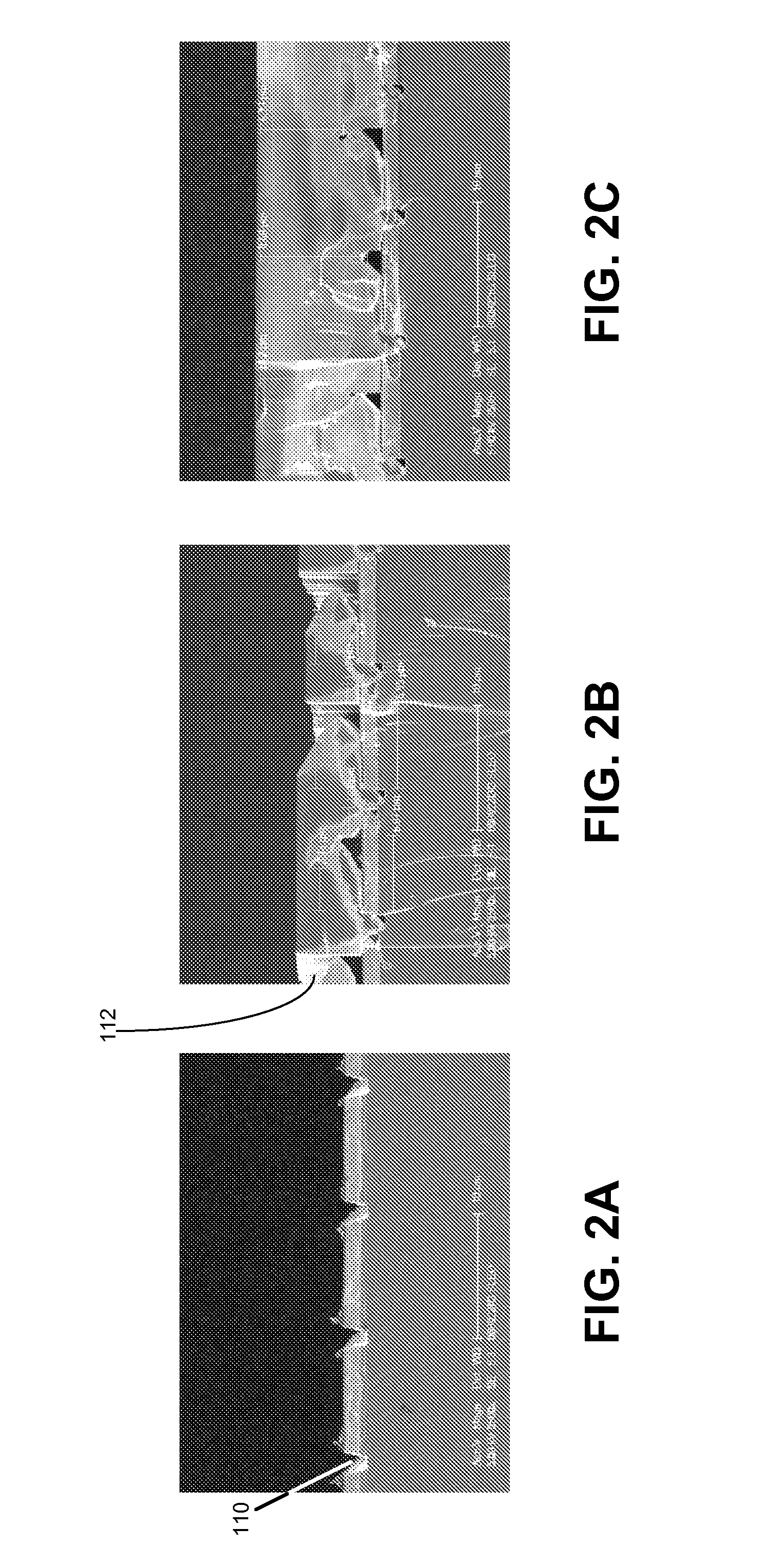CRYSTAL GROWTH OF M-PLANE AND SEMIPOLAR PLANES OF (Al, In, Ga, B)N ON VARIOUS SUBSTRATES
a technology of m-plane and semi-polar planes, which is applied in the direction of crystal growth process, polycrystalline material growth, chemically reactive gas, etc., can solve the problems of localized stacking faults in the edges of window regions, and achieves less leakage current, less polarization fields, and longer lifetimes
- Summary
- Abstract
- Description
- Claims
- Application Information
AI Technical Summary
Benefits of technology
Problems solved by technology
Method used
Image
Examples
Embodiment Construction
[0060]In the following description of the preferred embodiment, reference is made to the accompanying drawings that form a part hereof, and in which is shown by way of illustration a specific embodiment in which the invention may be practiced. It is to be understood that other embodiments may be utilized and structural changes may be made without departing from the scope of the present invention.
Overview
[0061]Conventional growth technique of GaN materials has two problems because growth direction of GaN is polar c-direction, and uses heteroepitaxy, which causes higher defects density.
[0062]Growth GaN along c-direction is relatively easy; however, this [0001] c-direction cause lower performance in optical devices due to polarized fields causing electrons and holes charge separation in the active regions. To eliminate this effect, growth on non-polar plane is suggested. Between a-plane and m-plane, m-plane is promising, because m-plane has stronger stability and higher Indium incorpor...
PUM
 Login to View More
Login to View More Abstract
Description
Claims
Application Information
 Login to View More
Login to View More - R&D
- Intellectual Property
- Life Sciences
- Materials
- Tech Scout
- Unparalleled Data Quality
- Higher Quality Content
- 60% Fewer Hallucinations
Browse by: Latest US Patents, China's latest patents, Technical Efficacy Thesaurus, Application Domain, Technology Topic, Popular Technical Reports.
© 2025 PatSnap. All rights reserved.Legal|Privacy policy|Modern Slavery Act Transparency Statement|Sitemap|About US| Contact US: help@patsnap.com



